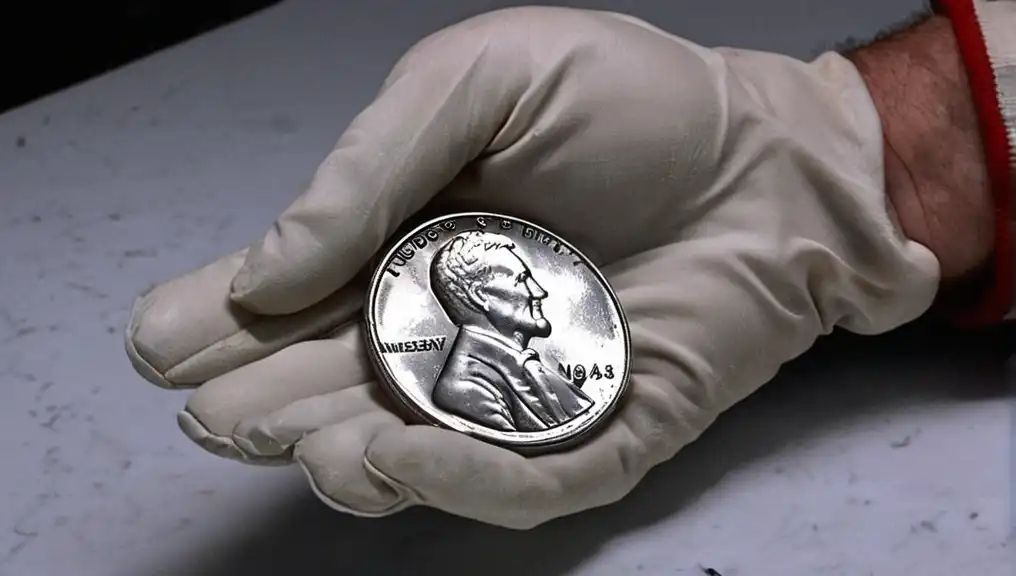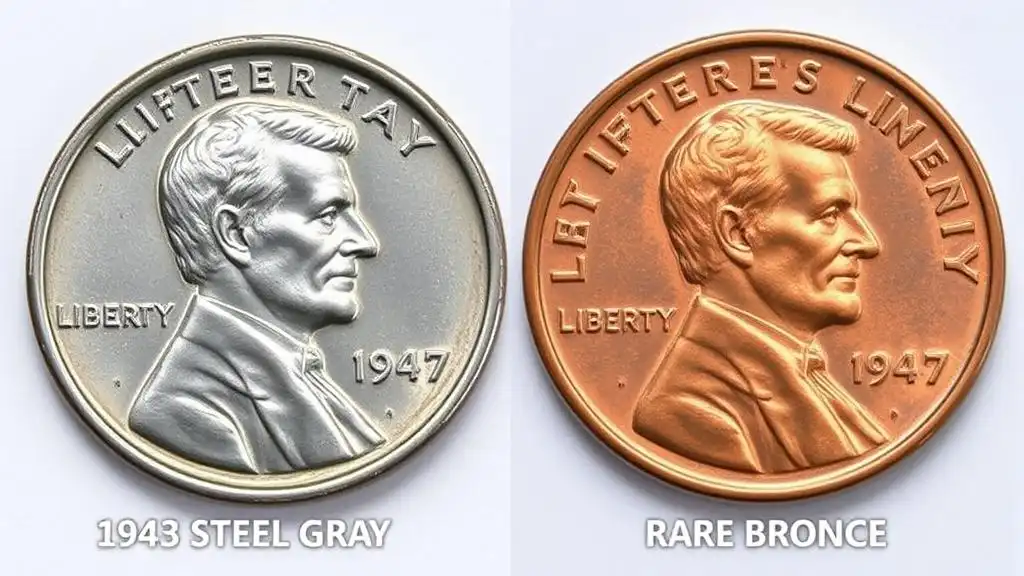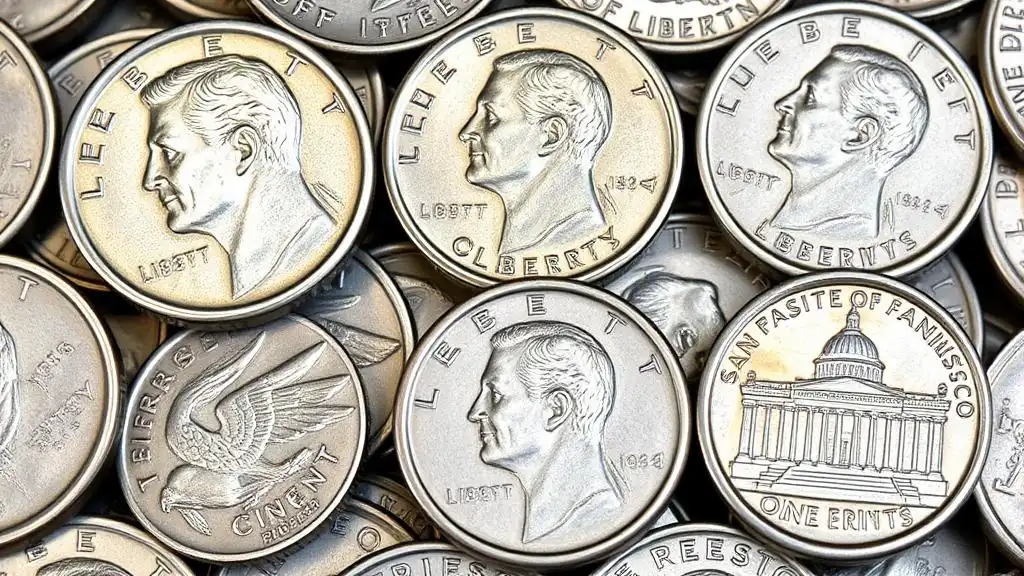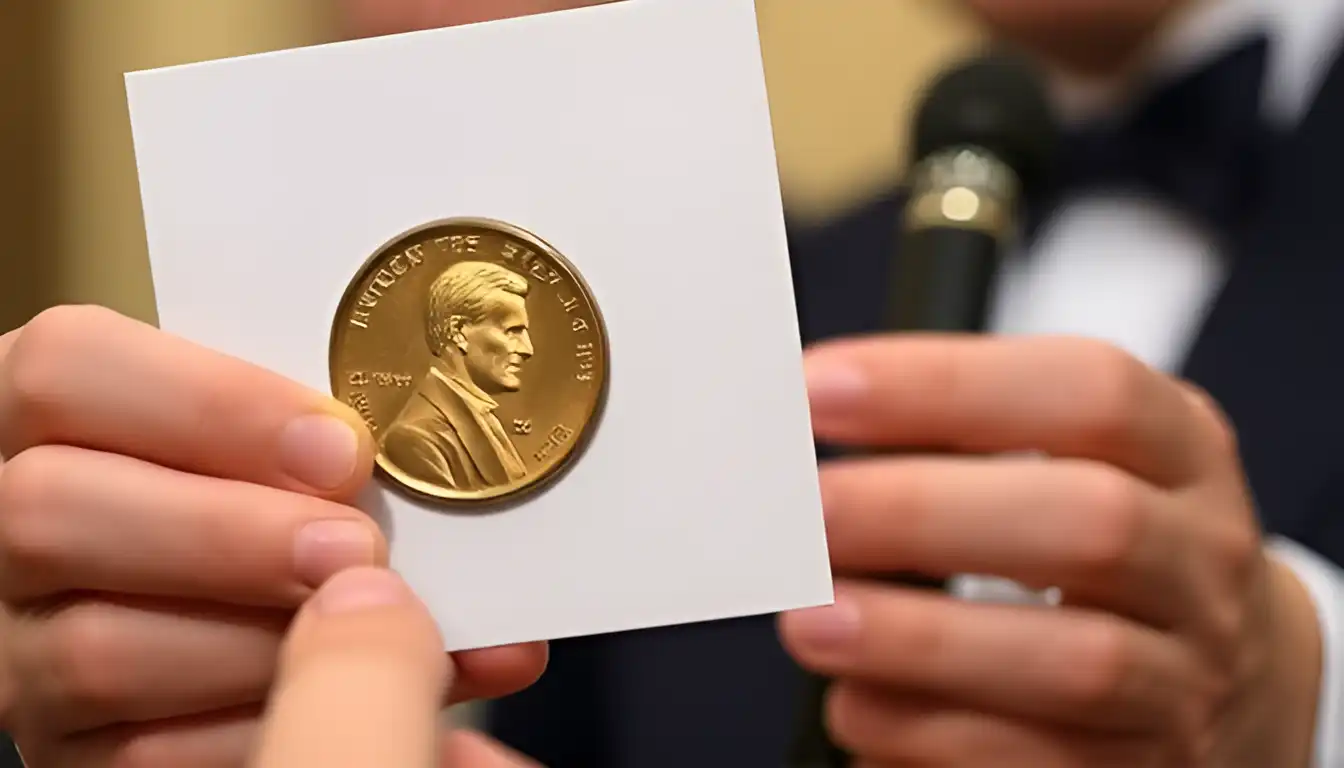Contents:
For coin collectors and history fans, few coins can be so valuable as the 1943 steel penny. It was minted during World War II. Today, it remains a desirable piece for collectors because of its history and value.
So, what are the origins of the 1943 steel penny? How many pennies were made in 1943? And what is a 1943 penny worth? We’re going to answer these questions and tell you everything about all the kinds of these littles, including the rare US pennies 1943, and different mint marks and gradings.

A Wartime Necessity: The Birth of the 1943 Steel Penny
The year 1943 was a time of great change and challenge in the United States. With World War II raging, the country’s resources were directed toward the war effort. Copper, which was traditionally used to mint pennies, was in short supply because it was needed for ammunition and other wartime necessities.
To cope with this issue, the U.S. Mint made a decision: pennies would be made from steel coated with zinc, rather than copper, for the duration of the war. Thus, the 1943 steel wheat penny—also known as the 1943 steel war penny—was born.
Interestingly, a few pennies were accidentally struck on bronze or copper planchets in 1943. This created one of the rarest and most valuable coins in American history: the 1943 bronze Lincoln cent. This rare copper penny from 1943 has become one of the most expensive bronze Lincoln coins among numismatists.

Why Are Steel Pennies Wanted by Collectors?
What makes the 1943 steel penny such an attractive collectible is connected with its historical part and its appearance. These pennies are distinctly different from any other U.S. coin because of their shiny, silvery look. Many people who stumble upon one often wonder why a penny, usually copper-colored, is suddenly steel. It’s this eye-catching difference that collectors adore.
However, one downside of the steel penny is its tendency to rust if not properly cared for. The zinc coating can wear off, exposing the steel underneath to the elements. A steel penny in poor condition will naturally be worth less, which is why collectors want to find pennies in excellent or uncirculated condition. The more protected these coins are from wear, the higher is 1943 steel war penny worth.
How to Identify a Kind of Penny?
If you find a rare 1943 bronze penny, it could change your life. But how do you know if you’ve struck gold—or rather, copper? First, it’s important to understand that the 1943 bronze Lincoln cent is a rare error coin, and the odds of finding one in your spare change are slim.
However, some have surfaced over the years in unexpected places. This proves that luck can still play a role in coin collecting, though.
To identify a 1943 copper penny, you can use a simple magnet test. Steel pennies will stick to a magnet, while the rare bronze versions will not. If you find a non-magnetic 1943 penny, you might want to have it authenticated by a professional numismatist, as the 1943 copper wheat penny value can easily surpass $100,000—and even reach over a million dollars at auction!

The End of Steel Pennies and the Return to Copper
As the war drew to a close, copper once again became available for coin production. By 1944, the U.S. Mint returned to using copper for pennies. This was the end of the short-lived steel penny era.
However, the legacy of the 1943 steel wheat penny remains strong in the world of numismatics. These coins serve as a reminder of how global events can shape even the smallest aspects of daily life, such as the currency in your pocket.
After 1943, the U.S. Mint resumed producing pennies with a copper alloy, and steel pennies became a collectible item almost overnight. Today, owning a 1943 steel penny—whether from Philadelphia, Denver, or San Francisco—is a wish of many collectors.
How Many Pennies Were Made in 1943?
In 1943, more than 1 billion steel pennies were minted across three U.S. Mint locations: Philadelphia, Denver, and San Francisco. Here's a breakdown of the mintage numbers:
Philadelphia (no mint mark): 684,628,670 coins
Denver (D): 217,660,000 coins
San Francisco (S): 191,550,000 coins
These steel pennies were produced en masse, but their survival in good condition has varied. That’s why some versions are more valuable today than others.

Why Is the 1943 Steel Penny Valuable Today?
While the 1943 steel penny may have been a temporary wartime measure, its composition makes it desirable and beloved by many. In addition, the rarity of certain versions—particularly the 1943 D bronze cent and the bronze penny 1943 S—has turned them into highly valuable collector’s items. Even the common steel versions can fetch a pretty penny in mint condition.
In the decades since these pennies were minted, their value has only grown. Today, collectors are eager to get their hands on these rare coins, especially those in pristine condition or with historical anomalies.
So, What Is the Worth of 1943 Steel Penny?
The value of a 1943 steel penny can vary significantly. But how can you understand whether your coin is worth anything? It depends on its condition and mint mark. Here's a look at the current value range for these coins:
Coin Type | Circulated Condition | Uncirculated Condition | Rare or Error Versions |
1943 Steel Penny (Philadelphia) | $0.20 to $2.00 | $5.00 to $10.00 | Not Applicable |
1943 D Steel Penny | $0.30 to $3.00 | $6.00 to $12.00 | 1943 D Bronze Cent: Up to $1.7 Million |
1943 S Steel Penny | $0.40 to $3.00 | $7.00 to $15.00 | 1943 S Bronze Penny: Over $1 Million |
1943 Copper Penny (Any Mint) | N/A | N/A | Copper Error: Over $100,000 |
Disclaimer: These are approximate prices for how much is a steel wheat penny from 1943 worth. To understand their real current value we recommend that you contact auction houses, reputable grading services, or other official services.
In general, circulated steel pennies from 1943 are worth between $0.20 and $3. However, uncirculated examples can command significantly higher prices from $5 to $15. The true stars, though, are the bronze Lincoln pennies from 1943, which can fetch upwards of $100,000 to over $1 million.
The Rare Penny from 1943: A Collector’s Dream
While most pennies minted in 1943 were made of steel, a few were mistakenly struck in bronze. These error coins are incredibly rare, with fewer than 20 known to exist. One of these 1943 bronze pennies sold at auction for a staggering $1.7 million. It’s one of the most valuable coins in U.S. history.
If you ever come across a 1943 copper wheat penny, it could be worth more than your house! What is a 1943 copper penny worth? The value of a 1943 D copper cent is similarly astronomical, with one known to exist in mint condition, currently valued at over $1 million.
What is a 1943 S steel penny worth? The 1943 S mint steel penny is another collectible coin, especially in higher grades. These coins are typically worth around $0.40 to $3 in circulated condition, but mint-state examples of 1943 S penny value can be $7 - $15 or more.

Why Collecting Steel Pennies?
The 1943 steel penny holds a special place in the hearts of coin collectors and history fans. Many collectors want to build a complete 1943 steel cents set, which includes pennies from all three mints: Philadelphia, Denver, and San Francisco. These sets, especially when uncirculated, can be valuable additions to any collection.
But if you're lucky enough to find a 1943 D wheat penny worth much more—such as the rare bronze version—you could be really rich. Try to check it out in a coin identifier app.
While the steel Lincoln cent is a unique and valuable coin, it’s the bronze Lincoln penny from 1943 that captures the imagination of collectors. These rare coins were an accident, struck on leftover bronze planchets instead of the newly introduced steel blanks. This minting error created some of the most valuable coins in the world, with the 1943 bronze Lincoln cent and 1943 copper penny commanding prices that reach into the millions.

1943 US Penny Worth: Wrapping Up the Story
These coins are rather expensive and valuable in terms of their history. The 1943 steel penny value 2022 was still strong, and it remains so still. The rarest examples continue to break records at auction.
If you’ve ever wondered, “What is the 1943 steel wheat penny D value?,” now you know that even the humble steel versions can make you rich, while the rare bronze Lincoln pennies are nothing short of numismatic legends.
Coins like the 1943 D steel wheat penny or the 1943 S mint steel penny may not seem valuable at first glance, but their connection to the war effort and their unique place in history have made them desirable collectibles.



